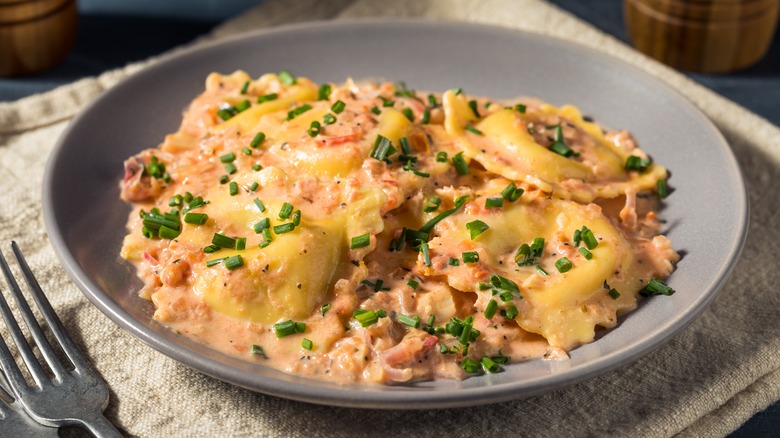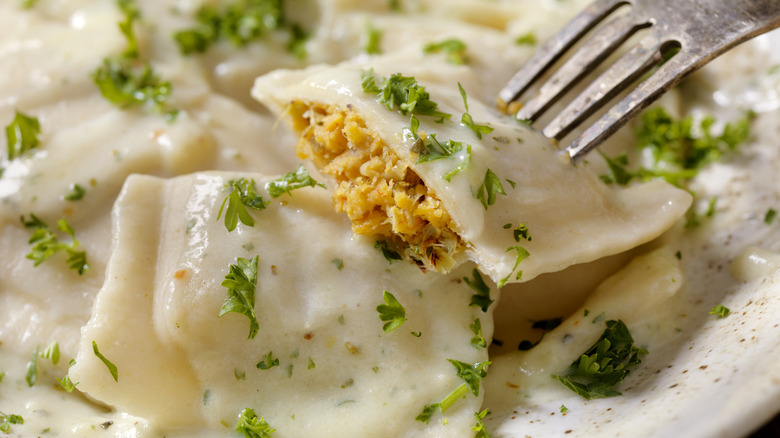Should You Serve Lobster Ravioli With A Red Or White Sauce?
Few dishes are more iconic — or in modern times considered more decadent, although that wasn't always the case — than lobster. Whether you're talking about whole-boiled lobster, lobster mac and cheese, or butter-poached lobster, there's something that just feels fancy about the sea bug. And maybe no dish feels more satisfyingly high-class than lobster ravioli, which is why it's become so popular in the last few decades.
But if you're making a lobster ravioli yourself, what sauce should you use? Obviously, it makes a difference whether you go with white or red sauce, but is one considered a faux pas on the same level as (at least according to some people) cheese with seafood?
To put your mind at ease: there's no one correct answer here. You're not doing anything wrong if you pair your lobster ravioli with red sauce ... but you might get the most benefit if you use a cream sauce, which is why most restaurants favor that approach.
White sauces are more associated with fish
You absolutely can serve lobster ravioli with red sauce if you love it, but you might not be getting the most out of it. Cream sauces tend to work well with seafood in general; there's a reason the iconic fish and chips condiment is tartar sauce rather than, say, ketchup, and so many seafood condiments have cream, not tomato bases.
Owing to their signature tomato base, red sauces have enough acid that their flavors can overpower the more subtle tastes of many types of seafood unless the sauce is very carefully balanced. Meanwhile, white sauces mesh well with the brininess of a lot of seafood, bringing out its natural flavor in delightful ways. Sure, you could eat spaghetti and red sauce with shrimp, and it'll taste good. But shrimp scampi made with garlic butter didn't get to be the more well-known preparation by accident, and it's much easier to get right.
Many options for white sauce with lobster ravioli
If you're going to go with a red sauce, though, the most important thing is to focus on making sure the dish is balanced. That means finding a way to counteract the natural acidity of tomato-based sauces; the best way to do this without using cream, like for a vodka sauce, is to use some kind of sweetness. Honey would work well in this case, as would caramelized onions on artichoke hearts. Another option is to add a base like baking soda (but just a pinch) to counteract the acid. A long simmer will soften acidic flavors as well, but baking soda, sugar, and small amounts of savory fats are the shortcuts available.
A final option is to split the difference between red and white, by making a tomato cream sauce similar to what you'd find in penne alla vodka. Whichever you go with, the most important thing here is that you pick a sauce that goes well with the lobster and the meal as a whole. Beyond that, it's entirely up to you.


